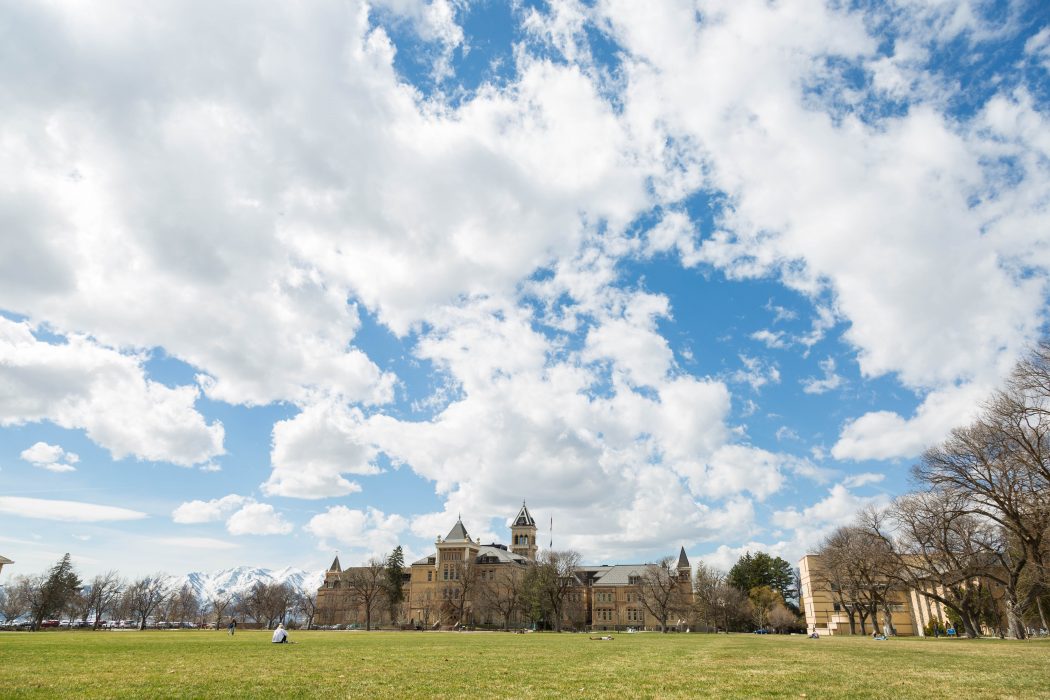Spring arrives, pollution levels drop in Cache Valley
Spring has arrived and brought with it a breath of fresh air.
Though spring means less pollution, Dr. Randy Martin, an associate research professor and air quality expert at Utah State University, warns there is no safe amount of air pollution.
This past winter, Logan experienced an especially rough winter in terms of pollution. According to Martin, Logan had already experienced 12 red air days by mid-February, when there are typically only 16 per year. Red air days happen when pollution levels reach a certain percentage based on national air quality standards.
 Kyle Todecheene
Kyle Todecheene As the valley’s tight inversion traps polluted air, wintertime pollution conditions can reach dangerous levels.
“Basically the air’s got nowhere to go.” Martin said.
Martin said that even pollution on yellow air days can have significant negative impacts on lung capacity. Breathing deeply can become difficult and even painful on a yellow or red air day if a person is outside for too long.
According to the Environmental Protection Agency’s website, repeated exposure to heavily polluted air can cause permanent lung scarring and permanent reduction of lung capacity.
Martin said prolonged exposure to bad air is also linked to an extensive list of conditions like heart-attacks, asthma and low birth weight.
The shining sun and crisp breeze of spring bring about a “rebirth” or “reawakening,” Martin said. “Sort of a ‘not much to see here, move along,’ at least from an air quality standpoint,” Martin said.
This warm, clean air is inspiring Aggies to come out of winter hiding and go outside to catch some rays.
Junior Amy Nielson said she loves basking in the warm sun and playing sports outside.
Zach Green, a senior, said, “I love spring because that means it’s time for March Madness!”
Green enjoys watching the games with his front door and windows open to let in the fresh air. He also said he looks forward to hiking and mountain biking again. Martin mainly attributed the lowered pollution in spring air to the dynamics of meteorology.
Weather patterns like rain can help flush out pollutants. Additionally, the sun’s heat and brightness are not at full capacity in the spring, so the sun does not interact much with air particles and pollutants to create chemical reactions, which can produce problems like smog. In the spring, high wind speeds can sweep away air pollutants, whereas in winter, slow wind speeds make for stagnant air conditions, Martin said.
“We don’t have persistent high-pressure systems because the way the earth is rotating in its cycle, we’re kind of in that maximum change of inputs into our meteorological system that it’s in a state of flux, not in a stagnant state,” Martin said.
While there are more green air days in the spring compared to the winter, Martin said there is still “no safe level of air pollution.”
Pollution can have negative effects on a person once it becomes measurable. However, Martin said spring air does not have as many long-term or immediate health impacts as winter air.
Once spring rolls around, Logan residents have one less excuse to refrain from exercise.
While Martin said it is difficult to measure if people are generally healthier during the spring, exercising outdoors is healthier during the spring than in the winter. He said those who exercise outdoors in the spring experience more efficient oxygen exchange, as they do not come in contact with unhealthy levels of pollutants like they do in winter.
Students around campus are dusting off their bikes, longboards and scooters, as well as walking more frequently instead of driving.
Martin said this can certainly lower emissions, but only on a small scale. His real hope is that students will form good, lower-emitting transportation habits that will carry over year-round and “be aware of what they’re adding to the air.”
Avoiding idling in vehicles can also make a big difference in reducing pollution, he said.
“It’s a mindset,” Martin said. “Once we get used to doing these environmentally-friendly things, it’s easier to do year-round and not just in the spring and summer.
It all comes from thinking more environmentally. It may be time to think about, ‘How can I change my habits and carry that through the rest of the year?’”
— melodyj300@gmail.com
@melodyj300

